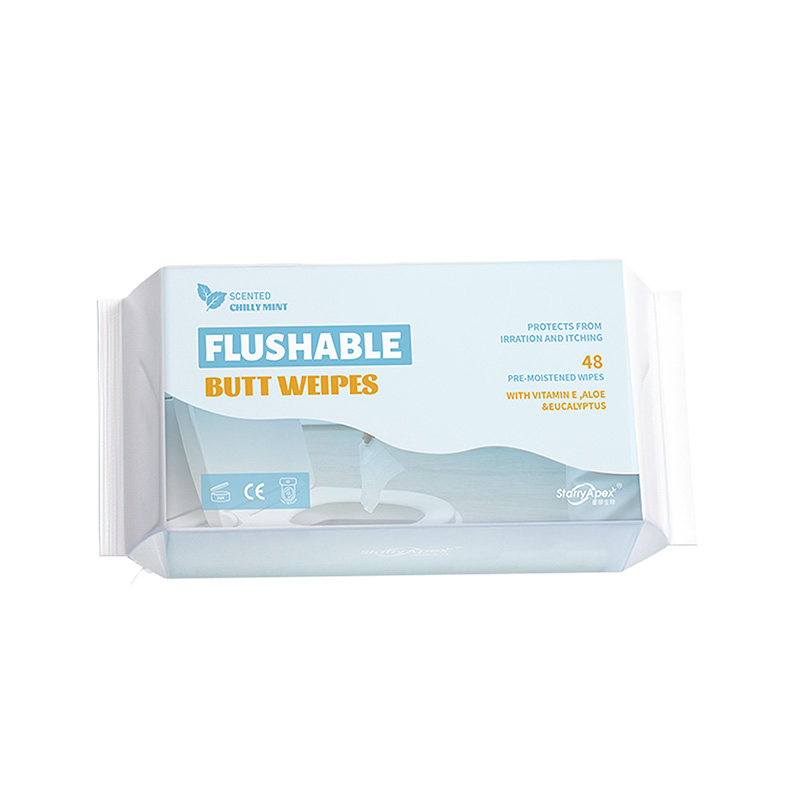In our quest for convenience and hygiene, disposable wipes have become ubiquitous. From baby care and personal cleansing to household cleaning and makeup removal, they offer a quick solution. However, the environmental toll of conventional wipes, often made from plastic fibers like polyester or polypropylene, is staggering. They contribute to sewer blockages (the infamous “fatbergs”), litter landscapes, and persist in oceans for centuries, breaking down into harmful microplastics. This has fueled intense interest in biodegradable wipes as a more sustainable alternative. But what does “biodegradable” truly mean for wipes, and how can you make genuinely eco-friendly choices? Let’s demystify.
Beyond the Buzzword: What “Biodegradable” Really Means for Wipes
The term “biodegradable” is often used broadly, but it has specific scientific meaning. A material is biodegradable if microorganisms (like bacteria and fungi) can break it down into natural substances – water, carbon dioxide, biomass (compost), and potentially methane – within a reasonable timeframe under specific environmental conditions.
The critical points often glossed over are:
Timeframe: Biodegradation isn’t instantaneous. It can take weeks, months, or years depending on the material and environment. A wipe degrading in 6 months is vastly different from one taking 50 years.
Environment: Conditions matter immensely. Something might biodegrade quickly in an industrial composting facility (high heat, specific microbes) but barely break down in a cool backyard compost bin, a landfill (often anaerobic), or worse, the ocean.
End Products: True biodegradation leaves behind harmless natural compounds. If it leaves microplastics or toxic residues, it doesn’t truly qualify.
The Materials: What Are Biodegradable Wipes Made From?
Genuine compostable wipes rely on plant-derived fibers instead of petroleum-based plastics. Key materials include:
Wood Pulp/Cellulose: The most common base. Derived from sustainably managed forests (look for FSC certification), it’s a natural fiber. However, pure cellulose wipes can be weak when wet, so binders are often needed.
Viscose/Rayon: Also derived from wood pulp, but processed chemically. While originating from cellulose, the processing can sometimes involve harsh chemicals, raising sustainability concerns about the production process. Not all viscose is equal.
Lyocell (e.g., TENCEL™): A more sustainable type of rayon using a closed-loop process that recovers solvents. Known for its softness and strength.
Cotton: Organic cotton is a renewable resource, but its water footprint is high. Often blended for strength and softness.
Bamboo: Bamboo grows rapidly without pesticides. However, the process to turn bamboo stalks into soft fiber (similar to viscose) can be chemically intensive. Ensure transparency about processing.
PLA (Polylactic Acid): A bioplastic derived from corn starch or sugarcane. It biodegrades under specific composting conditions but not typically in home compost or natural environments. Often blended with cellulose for strength.
Other Natural Fibers: Hemp, flax, or other bast fibers are emerging but less common.
The Certification Conundrum: Trust, Don’t Assume
This is where sustainable wipes certification becomes crucial. Don’t just trust the word “biodegradable” or “eco-friendly” on the front. Flip the pack and look for independent, rigorous certifications:
Home Compostable Certification (e.g., OK Compost HOME, AS 5810): The gold standard for wipes. This means the wipe will break down completely into non-toxic compost within a reasonable timeframe (usually 6-12 months) in a typical home compost bin. This is the most accessible and environmentally sound disposal route for consumers. Finding certified home compostable wipes is key.
Industrial Compostable Certification (e.g., BPI, OK Compost INDUSTRIAL, EN 13432): Requires specific conditions found only in industrial composting facilities (higher temperatures, controlled humidity). Crucially, if your local waste service doesn’t accept these wipes for industrial composting, they likely end up in landfill, where biodegradation is extremely slow or non-existent due to lack of oxygen.
Marine Biodegradable Certification (e.g., TÜV Austria OK Biodegradable MARINE): A newer and stricter standard, indicating the material will biodegrade in seawater within a specific timeframe (e.g., 6 months) without harming marine life. Very few wipe products currently meet this.
Flushability Certifications (e.g., INDA/EDANA GD4, IWSFG): Extreme Caution Here. “Flushable” is a highly contentious label. Even wipes passing industry tests (which often involve gentle agitation in clean water) can cause massive problems in real-world sewer systems that handle toilet paper, fats, and other debris. Septic safe wipes marketed as flushable are a major cause of clogs. Avoid flushing ANY wipe, even if labeled flushable. The only thing that should be flushed is human waste and toilet paper. Non flushable wipes disposal always means the bin.

The Disposal Reality: Bin It, Don’t Flush It!
This cannot be stressed enough: Do not flush biodegradable wipes. Even certified industrial compostable wipes are not designed to disintegrate rapidly enough in water to prevent plumbing and sewage system nightmares. Wipes in sewer systems are a costly and environmentally damaging problem. Clogged pipes from wipes happen regardless of material if they don’t break down instantly like toilet paper.
Proper disposal for biodegradable wipes depends entirely on their certification:
Certified HOME Compostable: Dispose of in your home compost bin. Remove any plastic packaging first. Break them up slightly to aid decomposition.
Certified INDUSTRIAL Compostable: Only dispose of in your organic waste bin if your local waste management service explicitly accepts them and sends organics to an industrial composter. If unsure, put them in the general waste bin (landfill). Never in home compost.
No Certification or Only “Biodegradable” Claim: Treat as general waste. Put them in the trash bin destined for landfill. There’s no guarantee they will break down effectively.
Making Truly Sustainable Choices: Beyond the Wipe Itself
Choosing better wipes is a step, but consider these broader strategies for reducing wipes environmental impact:
Reduce First: Ask, “Do I need a wipe for this?” Often, a damp washcloth, reusable cotton pad, or sponge is just as effective and generates zero waste. Reusable alternatives to wipes are the most sustainable option long-term.
Choose Certified: Prioritize wipes with clear, reputable home compostable certification (OK Compost HOME, AS 5810). This offers the most accessible and reliable end-of-life solution. Be wary of vague terms like “plant-based” or “natural” without certification.
Scrutinize Ingredients: Look for wipes with simple, natural, and non-toxic cleansing solutions. Avoid harsh chemicals, synthetic fragrances, parabens, and SLS/SLES, which are harmful to aquatic life even if the wipe biodegrades.
Consider Packaging: Is the packaging also minimal and recyclable or compostable? Excessive plastic wrapping undermines the eco-credentials.
Dispose Correctly: As emphasized, never flush. Follow the disposal instructions based on the wipe’s actual certification, not marketing claims.
Support Innovation: The market is evolving. Look for brands transparent about materials, sourcing, and certifications.
The Future: Innovation and Responsibility
The demand for biodegradable wipes is driving positive change. Research continues into stronger, faster-degrading natural fibers, truly marine-safe materials, and even dissolvable wipe technologies. However, consumer education and responsible disposal are equally vital. Manufacturers have a duty to be transparent about certifications and disposal instructions, avoiding greenwashing. Governments need to strengthen regulations around labeling (especially “flushable” claims) and invest in composting infrastructure.
Conclusion: A Step Towards Greener Hygiene
Biodegradable wipes offer a significant environmental improvement over traditional plastic wipes, if they are genuinely certified compostable and disposed of correctly. Understanding the nuances of materials, certifications, and disposal is key to making choices that align with your eco-values. Remember:
“Biodegradable” is not enough: Demand specific certifications (especially Home Compostable).
Never flush any wipe: Bin it. Always.
Reduce use: Embrace reusables where possible.
Dispose mindfully: Follow instructions based on certification.
By making informed choices and handling disposal responsibly, you can harness the convenience of wipes while minimizing their footprint, contributing to a cleaner planet one conscious choice at a time. It’s about moving beyond mere convenience towards genuine eco-friendly wet wipes solutions rooted in science and responsibility.


 English
English 日本語
日本語 Español
Español عربى
عربى Deutsch
Deutsch Français
Français Baby Wipes
Baby Wipes Industrial & Automotive Wipes
Industrial & Automotive Wipes Biodegradable Wipes
Biodegradable Wipes Cotton Buds and Pads
Cotton Buds and Pads

